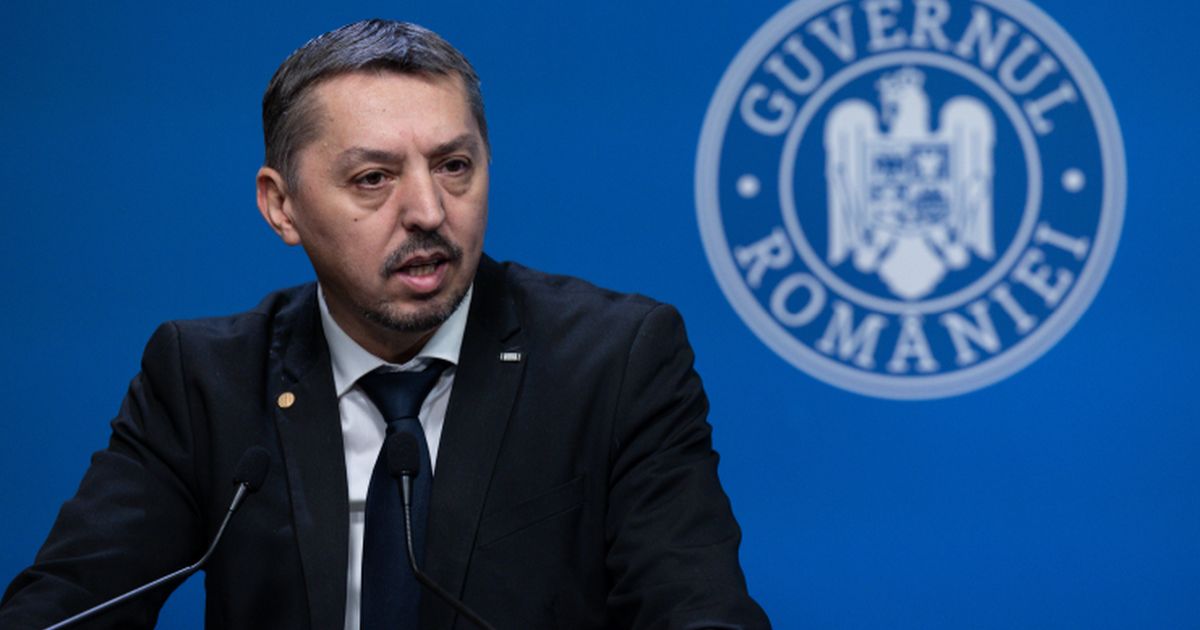a) proba de intelegere a unui text audiat, cu durata de 20 de minute, in cadrul careia se evalueaza competente privind receptarea textului audiat;
b) proba scrisa, cu durata de 120 de minute, in cadrul careia se evalueaza competente privind receptarea textutui citit si producerea de mesaje scrise;
c) proba orala, cu durata de 10-15 minute, in cadrul careia se evalueaza competente privind producerea de mesaje orate si interactiunea orala.
Pregatiti-va suplimentar pentru Bacalaureat 2022! Portal Invatamant va recomanda culegerile cu exercitii si rezolvari de AICI ....click pentru detalii si comenzi culegeri >>>
Cum se noteaza competentele intr-o limba straina la BAC 2022
Pe ansamblul celor trei probe, evaluarea candidatilor se face separat pentru fiecare din cele cinci competente prevazute in Cadrul European Comun de Referinta pentru Limbi, conform Anexei 1 a prezentei proceduri.
Profesorii examinatori acorda, de comun acord, un nivel de la A1 la B2, conform Cadrul European Comun de Referinta pentru Limbi in urma aplicarii baremelor de notare si evaluare. Nivelul acordat de fiecare profesor examinator este inregistrat in Borderoul final de evaluare.
Pentru fiecare din cele cinci competente evaluate prin cele trei probe, nivelul de competenta lingvistica intr-o limba de circulatie internationata studiata pe parcursul invatamantului liceal se stabileste in conformitate cu baremele de evaluare corespunzatoare.
Pentru candidatii care obtin intre 0-10 puncte si care, conform CECRL, nu pot obtine un nivel de competenta lingvistica intr-o limba de circulatie internationala, actele de studii se completeaza prin bararea rubricilor corespunzatoare.
Nivelul de competenta lingvistica intr-o limba de circulatie internationala studiata pe parcursul invatamantului liceal, pentru fiecare competenta in parte, este inscris in Certificatul de competenta lingvistica intr-o limba de circulatie internationala.
Candidatii care refuza sa rezolve subiectele propuse se considera ca nu au sustinut proba de evaluare a competentelor lingvistice intr-o limba de circulatie internationala studiata pe parcursul invatamantului liceal.
CALENDAR probe de evaluare a competentelor BAC 2022:
6 - 8 iunie: Proba A - evaluarea competentelor lingvistice de comunicare orala in limba romana;
8 - 9 iunie: Proba B - evaluarea competentelor lingvistice de comunicare orala in limba materna;
8 - 10 iunie: Proba D - evaluarea competentelor digitale;
14 - 16 iunie: Proba C - evaluarea competentelor lingvistice intr-o limba de circulatie internationala.
MODEL de subiect competente Limba engleza la BAC 2022
Proba de înţelegere a unui text audiat la Limba engleză
SUBIECTUL I (40 de puncte)
You will hear a man and a woman talking about her job in the aviation industry. For questions 1 – 4 choose the best answer (A, B, C or D).
1. What did the woman write for her company?
A. letters
B. memos
C. reports
D. contracts
2. What is leasing a plane similar to?
A. building a house
B. renting a car
C. taking a trip
D. sailing a boat
3. When do companies lease planes?
A. When their planes are being repaired.
B. When their planes are new.
C. When they want to save money.
D. When they want to increase profit.
4. What can you get with a wet lease?
A. two planes
B. a spare engine
C. a full crew
D. two pilots
SUBIECTUL al II-lea (60 de puncte)
You will hear an interview with Hillary Clinton, about her book, after losing the 2016 presidential election. For questions 5 – 10, choose the best answer (A, B, C or D).
5. At the very beginning of the interview, we learn that
A. the Clintons bought a house in Washington.
B. Hillary Clinton had many supporters.
C. the Clintons had many friends.
D. Hillary Clinton was very optimistic about her chances of winning.
6. After losing the elections, Hillary Clinton
A. regrets the time spent at home doing chores.
B. appreciates her family more.
C. admits it’s not what she wanted.
D. is preparing to take revenge.
7. In her book, “What Happened”, Hillary Clinton
A. does not put the blame on anybody for losing the elections.
B. admits she is responsible for not connecting with voters.
C. analyses mainly her political career.
D. reveals the identity of those who betrayed her.
8. Despite the fact that Hillary Clinton understood people’s feelings, in her political message,
A. she did not mention them.
B. she blamed them.
C. she advised them.
D. she did not react more emotionally.
9. When referring to the fact that the majority of the Americans did not trust her, Hillary states that
A. she was not aware of that.
B. she did try to win their trust.
C. she was advised to ignore them.
D. her campaign advisers could not find solutions.
10. What reason does she give when she explains why a great number of women did not vote her?
A. Women like only male presidents.
B. Successful women are not so popular.
C. Women are very stubborn.
D. Men are better presidents
Proba orală la Limba engleză
Bilet
1. Answer the following question: Do you generally prefer the book or the film of the same story? Why?
2. Describe a person about whom you could say: The world would be a better place if there were more people like him/her.
3. Do you feel that, despite the advent of social media, people are becoming
increasingly lonely nowadays? Why (not)? Use relevant arguments and examples
to support your ideas.
Proba scrisă la Limba engleză
ÎNŢELEGEREA TEXTULUI CITIT
SUBIECTUL I (40 de puncte)
Read the text below. Are the sentences 1-5 'Right' (A) or 'Wrong' (B)? If there is not enough information to answer 'Right' (A) or 'Wrong' (B), choose 'Doesn't say' (C). Mark A, B or C on your exam sheet.
In theory, a video could go viral just because one person posts a video, two people share it, four or their friends share it and so on. This perhaps might have happened occasionally with funny cat videos, but in reality, making a video viral is much more difficult than you think. Richard Fisher of New Scientist tried to deliberately create a viral video in 2009, describing his experiments in Atomic dogs: The making of an Internet sensation.
After experimenting different methods, he discovered that even if a video is good the only way to make it go viral is to get some help from a person who has real influence. One share by a "sneezer" like this can give a video the push it needs to start trending, triggering a self�sustaining chain reaction. In the New York Times article, they reveal that what made Kony2012 reach 40 million views in just a few days were the tweets by people like Oprah Winfrey and Justin Bieber, who have millions of loyal followers.
There is another way to make a video go viral. Many people remember the legendary "Tipp-Ex A Hunter Shoots A Bear" video on YouTube, viewed at least 20 million times. This was actually a very expensive ad, relying on a custom YouTube page, some clever application design work and quite a lot of work with a film crew, talent and a guy in a bear suit.
(http://andrewhennigan.blogspot.ro)
1. It is certain that a video will go viral when people share it.
A. Right B. Wrong C. Doesn't say
2. The author of the article tried to make a video go viral and failed.
A. Right B. Wrong C. Doesn't Say
3. A “sneezer” is a person who can help make a video go viral.
A. Right B. Wrong C. Doesn't Say
4. The tweets of famous people definitely helped Kony2012 have 40 million views.
A. Right B. Wrong C. Doesn't say
5. The help of famous people is the only way to make a video go viral.
A. Right B. Wrong C. Doesn't say
SUBIECTUL al II-lea (60 de puncte)
Read the text below. For questions 1-10, choose the answer (A, B, C or D) which you think fits best according to the text.
It all seemed so simple in 2008. All we had was financial collapse, a cripplingly high oil price and global crop failures due to extreme weather events. In addition, my climate scientist colleague Dr Viki Johnson and I worked out that we had about 100 months before it would no longer be “likely” that global average surface temperatures could be held below a 2C rise, compared with pre-industrial times.
What’s so special about 2C? The simple answer is that it is a target that could be politically agreed on the international stage. It was first suggested in 1975 by the environmental economist William Nordhaus as an upper threshold beyond which we would arrive at a climate unrecognisable to humans. In 1990, the Stockholm Environment Institute recommended 2C as the maximum that should be tolerated, but noted: “Temperature increases beyond 1C may elicit rapid, unpredictable and non-linear responses that could lead to extensive ecosystem damage.”
To date, temperatures have risen by almost 1C since 1880. The effects of this warming are already being observed in melting ice, ocean levels rising, worse heat waves and other extreme weather events. There are negative impacts on farming, the disruption of plant and animal species on land and in the sea, extinctions, the disturbance of water supplies and food production and increased vulnerability, especially among people in poverty in low-income countries. But effects are global. So 2C was never seen as necessarily safe, just a guardrail between dangerous and very dangerous change.
To get a sense of what a 2C shift can do, just look in Earth’s rear-view mirror. When the planet was 2C colder than during the industrial revolution, we were in the grip of an ice age and a mile�thick North American ice sheet reached as far south as New York. The same warming again will
intensify and accelerate human-driven changes already under way and has been described by James Hansen, one of the first scientists to call global attention to climate change, as a “prescription for long-term disaster”, including an ice-free Arctic.
Nevertheless, in 1996, a European Council of environment ministers, that included a young Angela Merkel, adopted 2C as a target for the EU. International negotiators agreed the same in 2010 in Cancun. It was a commitment repeated in the Paris Climate Accord of 2015 where, pushed by a new group of countries called the Climate Vulnerable Forum, ambitions went one step further, agreeing to hold temperature rises to “well below 2C above pre-industrial levels and to pursue efforts to limit the temperature increase even further to 1.5C”.
Is it still likely that we will stay below even 2C? In the 100 months since August 2008, I have been writing a climate-change diary for the Guardian to raise questions and monitor progress, or the lack of it, on climate action. To see how well we have fared, I asked a number of leading climate scientists and analystsfor their views. The responses were as bracing as a bath in a pool of glacial melt water.
1. How does the article present the situation in 2008 in the first two sentences?
A. overwhelmingly positive
B. neutral
C. challenging
D. terrifying
2. What is 2C?
A. the minimum temperature required for life on Earth
B. a political device
C. the maximum temperature that could be reached at the Poles
D. the bearable maximum rise in temperature
3. Temperature increases beyond 1C
A. are certain to damage the ecosystem.
B. are likely to damage the ecosystem.
C. are bound to damage the ecosystem.
D. are to damage the ecosystem.
4. The effects of the rise in temperature have already been noticed in
A. climate change.
B. climate change and species extinction.
C. climate change, species extinction and level of poverty.
D. climate change, species extinction, level of poverty and mood of the people.
5. In order to properly understand what the effects of 2C are, one needs to
A. analyse the evolution of the climate in the past years.
B. take into account the current situation.
C. be aware of all the climate changes starting millions of years ago.
D. compare recent climate changes.
6. Another warming of the climate by 2C after the industrial revolution will lead to
A. a worsening of the current problems.
B. new and problematic changes.
C. a definite improvement in the global temperature.
D. unknown consequences.
7. The Paris Climate Accord of 2015 was characterised by
A. a more negative attitude towards the climate changes.
B. confidence that temperatures can reach the pre-industrial levels.
C. lack of constructive feedback.
D. a positive and constructive attitude.
8. The author of the article has been in charge with
A. analysing climate action.
B. finding solutions to climate change.
C. an ongoing monitoring of current issues.
D. environmental articles.
9. The purpose of this article is to inform the readers about
A. the lack of action when it comes to climate change.
B. worrying uncertainty of the future when it comes to climate change.
C. the predominantly negative attitude of people towards climate change.
D. the need for people to join the fight against climate change.
10. The final sentence of this article is
A. ironic and worrying.
B. positively reassuring.
C. overgeneralising the topic.
D. matter-of-fact.
PRODUCEREA DE MESAJE SCRISE
SUBIECTUL I (40 de puncte)
____________________________________________________________________________
Your friend is going to study abroad and has just asked you to help him/ her improve his/ her English. Write an email to your friend, suggesting ways in which he/she can learn English better. Include information about the benefits he/she can enjoy if he/she takes your advice and any other necessary details.
Write your email in 80 - 100 words.
SUBIECTUL al II-lea (60 de puncte)
____________________________________________________________________________
You have recently participated in a class discussion on the topic of preserving the cultural heritage of your country. The discussion centred on solutions to be found in order to improve the current situation, such as increased funding and raising awareness. You have decided to write an essay on this topic for your teacher describing three solutions you would forward and their beneficial effects.
Write your essay in 180 - 200 words
Pregatiti-va suplimentar pentru Bacalaureat 2022! Portal Invatamant va recomanda culegerile cu exercitii si rezolvari de AICI ....click pentru detalii si comenzi culegeri >>>
CALENDAR Bacalaureat 2022, sesiunea iunie-iulie
-
23 – 27 mai 2022 - Inscrierea candidatilor la prima sesiune de examen
27 mai 2022 - Incheierea cursurilor pentru clasa a XII-a/a XIII-a
6 – 8 iunie 2022 - Evaluarea competentelor lingvistice de comunicare orala in limba romana — proba A
8 – 9 iunie 2022 - Evaluarea competentelor lingvistice de comunicare orala in limba materna — proba B
8 – 10 iunie 2022 - Evaluarea competentelor digitale — proba D
13 – 16 iunie 2022 - Evaluarea competentelor lingvistice intr-o limba de circulatie internationala — proba C
20 iunie 2022 - Limba si literatura romana — proba E.a) — proba scrisa
21 iunie 2022 - Proba obligatorie a profilului — proba E.c) — proba scrisa
22 iunie 2022 - Proba la alegere a profilului si specializarii — proba E.d) — proba scrisa
23 iunie 2022 - Limba si literatura materna — proba E.b) — proba scrisa
27 iunie 2022 - Afisarea rezultatelor la probele scrise (pana la ora 12:00) si depunerea contestatiilor in intervalul orar 12:00 – 18:00
28 – 30 iunie 2022 - Rezolvarea contestatiilor
1 iulie 2022 - Afisarea rezultatelor finale
CALENDAR BACALAUREAT 2022, sesiunea august - septembrie
18 - 25 iulie 2022 - Inscrierea candidatilor la a doua sesiune de examen.
16 august 2022 - Limba si literatura romana — proba E.a) — proba scrisa
17 august - Proba obligatorie a profilului — proba E.c) — proba scrisa
18 august - Proba la alegere a profilului si specializarii - proba E.d)
19 august - Limba si literatura materna - proba E.b).
22 - 23 august - Evaluarea competentelor lingvistice de comunicare orala in limba romana — proba A
24 august - Evaluarea competentelor lingvistice de comunicare orala in limba materna — proba B
25 august - Evaluarea competentelor digitale - proba D,
26 - 29 august - Evaluarea competentelor lingvistice intr-o limba de circulatie internationala - proba C.
31 august 2022 Afisarea rezultatelor la probele scrise (pana la ora 12:00) si depunerea contestatiilor
3 septembrie - Afisarea rezultatelor finale.
Pregatiti-va suplimentar pentru Bacalaureat 2022! Portal Invatamant va recomanda culegerile cu exercitii si rezolvari de AICI ....click pentru detalii si comenzi culegeri >>>

 Portalinvatamant
Actualizat in urma cu 7 minute
Portalinvatamant
Actualizat in urma cu 7 minute
 07Iun.2022
07Iun.2022







